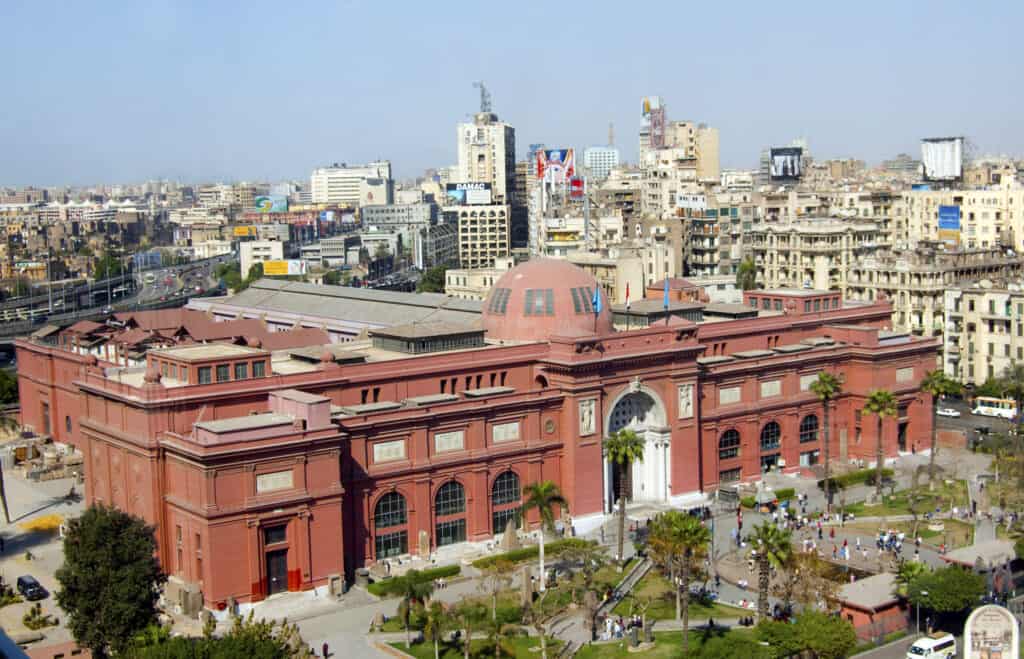For ancient history aficionados, no trip to Egypt is complete without a visit to the remarkable Museum of Egyptian Antiquities. A tour of the museum provides an indispensable glimpse into the lives and legacies of some of the world’s most fascinating historical figures from a proud civilization with traditions lasting for millennia. With over 120,000 items in its collections, its wealth of artifacts is second to none. Even repeat visitors will find something new to admire and analyze on every return to the museum. Its collections, lovingly curated by dedicated staff, contain relics of one of the greatest civilizations in human history.
Just walking through the museum entrance feels like an adventure waiting to happen. Visitors will pass the towering statues of ancient kings guarding the front doors and venture into a world most have never seen outside of books. Prepare to discover how tales of Egypt’s past have captured human hearts and imaginations for over five thousand years.
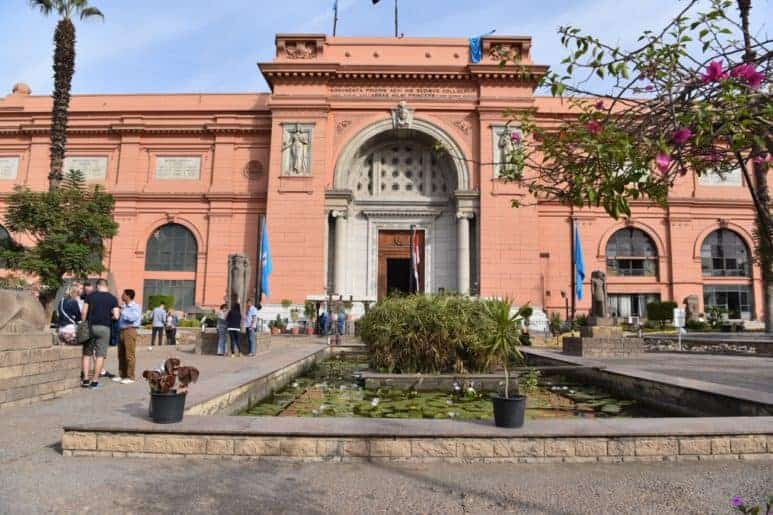
Ancient Egyptian Symbolism Explained on our Guided Museum Tours
One of the first artifacts to greet museum visitors is the famed Narmer Palette. The palette is a flat slab of stone slightly over two feet in height with images engraved on both sides. Its monochrome, seemingly mundane appearance belies the true depth of its value as one of the most significant archaeological objects ever unearthed. Carved into the stone is the tale of the first great Egyptian hero, King Narmer. In the 31st century BCE, Narmer united the kingdoms of Upper and Lower Egypt and founded the first dynasty of a reign of kings that would last thousands of years. At a time when records were painstakingly etched into stone, each image was symbolically meaningful, down to the last detail—the two great crowns of Egypt. The papyrus is shown with the lotus flower. These images and more were combined to form symbols of Egypt’s unity, symbols which reappeared continuously in later works of art. The Narmer Palette provides considerable fodder for analysis and tells a detailed story of Egypt’s first great king. Countless more tales are hidden in plain sight, and our expert guides will elaborate on the deeper stories behind the artifacts.
Witnessing Life, Love, and Death in the Egyptian Museum
A gallery devoted to burial tombs provides deep insight into ancient Egyptian attitudes and practices concerning death. Imposing limestone slabs and carefully painted tombs of various sizes fill the room. Hieroglyphs are etched into walls of crypts of varying sizes, providing instructions for how the relatives of the deceased should care for their loved ones after death. The tomb of one nobleman reveals precise instructions as to what he wanted his family to bring him to eat in the afterlife: in addition to enough meat to fill a zoo, he also required a thousand beers in each offering. Such demands were not uncommon. Numerous artifacts clearly show how significant the experience of death was to the ancient Egyptians, who prepared for the afterlife with as much intensity as they lived their years as mortals. Throughout the museum, visitors will encounter numerous stelas showing the recently deceased joyously reuniting with their families in the afterlife. On your Osiris Egypt trips, our guides will introduce you to the customs and beliefs that influenced the elaborate ancient Egyptian rituals concerning death.
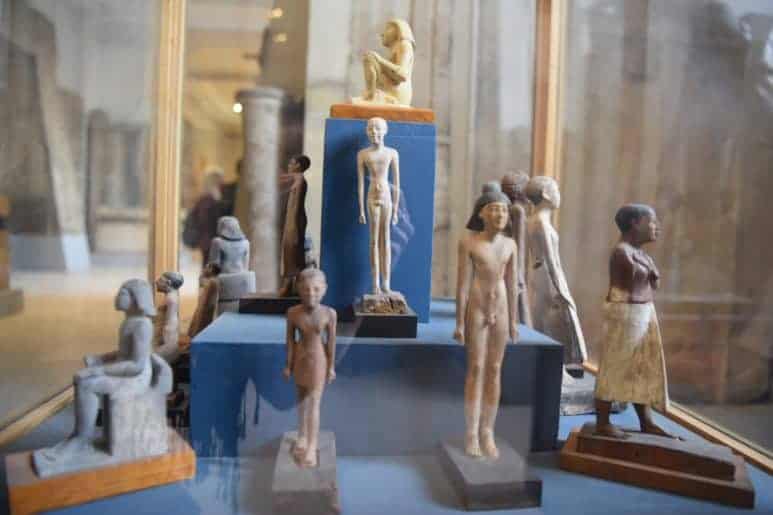
The artwork in the museum collections demonstrates the advanced workmanship of early Egyptian craftsmen. Within glass cases, statues with realistic, haunting eyes of semiprecious stones stare back at their viewers. Many of them retain their original paint, preserved in pristine condition. Most of these works portray families, and every detail down to the posture of the subjects gives insight into their relationships: a caring arm wrapped around a spouse, lovers’ hands enclosed, a supportive mother’s hand resting on a child’s shoulder… The extensive museum collections give anyone the opportunity to play archaeologists for a day by using the clues in the relics to make deductions about the nature of romantic and familial relationships in ancient Egyptian society.
Political Tales of Rivalry and Intrigue
Lovers of politics and unsolved mysteries will find there is plenty to discover in the halls of the Museum of Antiquities. One of the greatest mysteries of the pharaohs’ time surrounds the details of Queen Hatshepsut’s life and death. Queen Hatshepsut is one of the most famous queens of Egypt, and her temple is located in the West Bank of Luxor. Numerous stelas, statues, and other works provide clues about her controversial rise to power and the mysterious circumstances of her death. The legitimacy of her rule is still debated, and it is unclear if she died of natural causes or was deposed from her throne. No woman should have been able to rule with all the privileges of a male pharaoh, but Hatshepsut declared herself king, and many artifacts show her in full male regalia. Astute observers may notice that her name has been struck from her monuments. One of her enemies, likely a successor, tried to have her erased from history. This was a grave punishment in ancient Egyptian society, seen as a horrible impediment to the afterlife. Was Hatshepsut killed by jealous enemies? Visitors can view the evidence and decide for themselves. Numerous other tales of royal intrigue fill the museum walls, all thrilling stories waiting to be told.
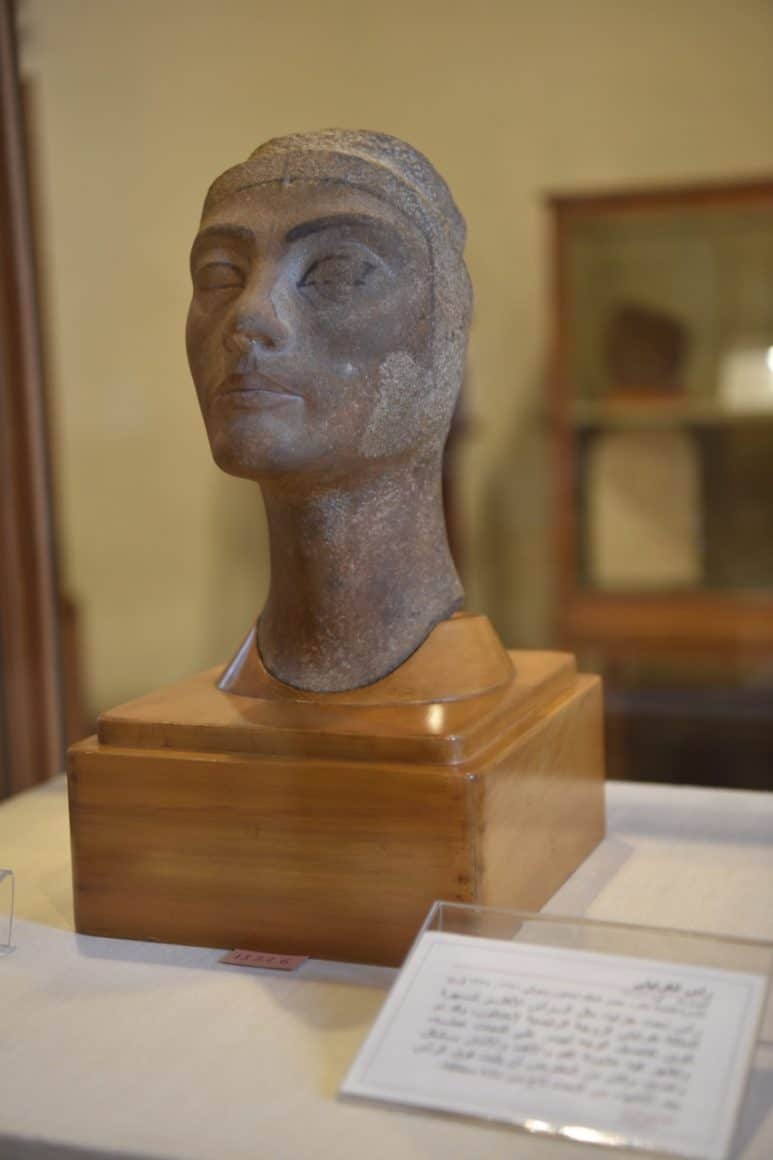
The Gilded Treasures of King Tut
The second floor is filled with marvels from the tomb of the famed “King Tut.” Tutankhamun’s tomb, unearthed by archaeologist Howard Carter, has been a source of awe and legend ever since its discovery in 1922. The splendor of Tut’s belongings is unparalleled. His remarkable nested burial chambers, plated in gold, are stunning works of art and design. Visitors can purchase their own from the museum gift shop if they are inclined towards such luxuries. The numerous treasures on display include golden bows and painted arrows, musical instruments crafted from precious metals, majestic jewelry, and more. King Tut’s face is arguably the most famous image associated with Egypt, and his marvelous mask is on display at the Egyptian Museum. Forged from 11 kilograms of solid gold and accentuated with brightly colored enamel, this priceless artifact captures the haunting beauty of the king who died as a boy. As part of the museum’s permanent collection, this iconic relic of ancient Egypt can only be seen in person by those who travel to see it.

Unraveling the Secrets of Egypt’s Mummies
Flanking the east and west sides of the museum are two Royal Mummy Halls, containing the world’s largest and most important collection of Egyptian mummies. Reading about famous historical figures and viewing the monuments they inspired is one thing; it is another to meet them in the flesh. These men and women once occupied the grandest tombs on earth, but they now are laid to rest together in the Egyptian Museum. Their display in glass cases in a museum exhibit is controversial but undeniably informative for dedicated Egyptian history fanatics. For a truly chilling experience, on certain occasions, the Royal Mummy Halls can be visited after the rest of the museum closes at night.
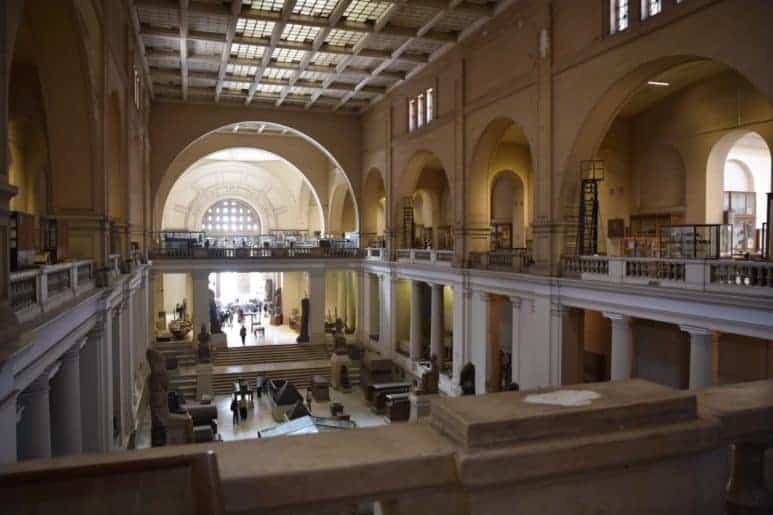
A visit to the Museum of Egyptian Antiquities provides an enlightening window into the mysteries of Egypt’s distant past. There is no substitute for the joy of discovery found within its halls. An expert-guided Egypt tour will ensure that visitors unearth all the museum’s greatest stories and that nothing important goes overlooked. The Egyptian Museum offers experiences that cannot be replicated and is a truly essential destination for anyone who visits Egypt.
